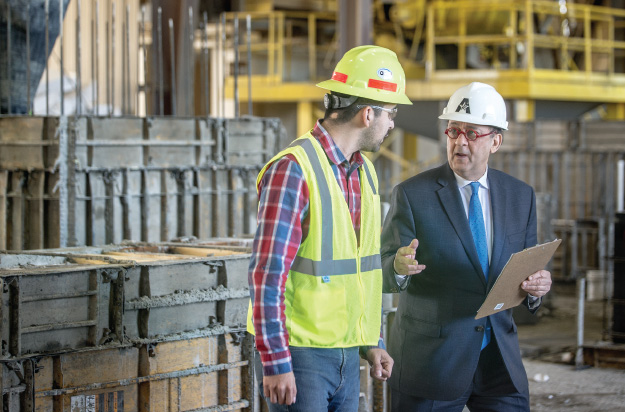Winter 2016: Energy Evolution
From carbon dioxide conversion to landfill mining, researchers at UTA are seeking viable alternative energy options.
Skip to content. Skip to main navigation.
From carbon dioxide conversion to landfill mining, researchers at UTA are seeking viable alternative energy options.
Found in everything from space shuttles to dental fillings, composite materials have thoroughly infiltrated modern society. But their potential is still greatly untapped, offering researchers ample opportunity for discovery.
Within the particle showers created at the Large Hadron Collider, answers to some of the universe’s mysteries are waiting.
Model systems like pigeons can help illuminate our own evolutionary and genomic history.
UT Arlington's tiny windmills are bringing renewable energy to a whole new scale.
The stability of our highways, pipelines, and even manholes is reaching a breaking point.
Scientists believe they have discovered a subatomic particle that is crucial to understanding the universe.
UT Arlington researchers unlock clues to the human body’s most mysterious and complex organ.
UT Arlington researchers probe the hidden world of microbes in search of renewable energy sources.
Wounded soldiers are benefiting from Robert Gatchel’s program that combines physical rehabilitation with treatment for post-traumatic stress disorder.
Tiny sensors implanted in the body show promise in combating acid reflux disease, pain and other health problems.
Nanotechnology researchers pursue hybrid silicon chips with life-saving potential.
Biomedical engineers combat diseases with procedures that are painless to patients.

UTA researchers recently received some help in their effort to strengthen Texas highways—over $1 million in grants.
Civil engineering Chair Ali Abolmaali and Research Associate Yeonho Park have spent five years extensively researching longer-lasting, sturdier concrete pipes reinforced with polypropylene synthetic macrofibers and developed in UTA labs. Now, thanks to an $800,000 contract from the Texas Department of Transportation (TxDOT), the team will install the pipes in Texas highway projects. A separate, $283,000 contract from the American Concrete Pipe Association will allow them to go national: The team will develop the 100-year service life protocol testing criteria for built pipes in Florida.
“The UTA-developed fiber pipes first attracted TxDOT engineers for implementation in Texas for a more durable and resilient infrastructure,” says Dr. Abolmaali, who is also the Dr. Tseng Huang Endowed Professor in the College of Engineering.
UTA and TxDOT will implement the pipes under highways and roadways that are subjected to heavy vehicle traffic. Abolmaali’s team will design, produce, and evaluate the pipes, along with conventional concrete pipes, during their installations. A UTA-owned robot will transmit condition assessment data as it travels through the pipes upon construction.
“The UTA fiber pipes will not experience corrosion of reinforcement during their lifetime,” Abolmaali says. “That has and will continue to attract many departments of transportation around the country and the world.”